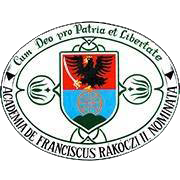Please use this identifier to cite or link to this item:
https://dspace.kmf.uz.ua/jspui/handle/123456789/4344| Title: | Зі свободою дій чи під примусом? Амбівалентний 1956 рік єпископа Бейли Ґенчі |
| Other Titles: | In free space of movement or in forced state? The ambivalent 1956 year of the Bishop Béla Gencsy |
| Authors: | Самборовскі-Нодь Ібоя Ibolya Szamborovszky-Nagy Szamborovszkyné Nagy Ibolya |
| Keywords: | Бейла Ґенчі;Закарпатська реформатська церква;протестанти (кальвіністи);радянська церковна політика;угорська революція 1956-го року;1956-й рік;Béla Gencsy;Hungarian revolution of 1956;Protestants (Calvinists);Soviet church politics;Transcarpathian Reformed Church;1956 |
| Issue Date: | 2024 |
| Publisher: | ВДПУ |
| Type: | dc.type.researchStudy |
| Citation: | In Наукові записки Вінницького державного педагогічного університету імені Михайла Коцюбинського. Серія: Історія. 2024. Випуск 49. с. 37-43. |
| Series/Report no.: | Серія: Історія;Випуск 49. |
| Abstract: | Abstract. The purpose of the article is to examine the public activities of Béla Gencsy in 1956 in
chronological, cause-and-effect order and in context, at the same time to present his positional range
of motion at that time – as the former bishop of the Transcarpathian Reformed Church – which could
have determined his ambivalent decisions. There research methodology is based on a combination
of general scientific, special-historical and interdisciplinary methods. Due to the current research on
the topic and the formulated aspects, we conducted primary source exploration, which above all
means the usage of archival documents. The scientific novelty of the work lies in the fact that based
on documents of the time – based on the events of the period under discussion – we explore
Béla Gencsy’s role as a church leader and the areas of his activities in the year 1956. With the help of
the archival materials at our disposal – beyond the dictated factocratic narrative of historical
chronology – we took into account the guidelines of the former bishop's public actions and looked for
their driving forces, which had not been examined in this context before us either in domestic or
foreign historiography. Conclusions. It cannot be disputed in any way that after the defeat of the
Hungarian revolution in 1956, the bishop Béla Gencsy wrote or signed the letter sent to the UN, in
which he refuted the news about the deportation of the Hungarian insurgents to the Soviet Union.
However, clear source evidence has not been found until today that whether he prepared the letter of
his own accord, or whether he wrote or signed it on the instructions of the Soviet state security
agencies. Attila Seres' statement is relevant to this issue, that it is not certain whether he could have
done anything else in his position. It should also be noted that he never condemned the priests of the
Hungarian Reformed Church who joined the revolution, or the statements of László Ravasz - the
bishop of the Hungarian Reformed Church. On the other hand, it can also be ascertained that in the
autumn and winter of 1956, he provided his ministers who were in Hungary during the revolution with
the official background to the Religious Cult Affairs Council, and when they returned, he did not allow
them into the state office until the Transcarpathian plenipotentiary representative ensured their
impunity. In several cases, the revealed facts and events cast a different light on Gencsy himself and
on the personality and judgment of the characters of the contemporary events. Резюме. Метою статті є в хронологічному порядку, з дотриманням причинно-наслідкових зв’язків та історичного контексту проаналізувати публічну діяльність Бейли Ґенчі в 1956 році, розкривши його як єпископа Закарпатської реформатської церкви потенційний «простір для маневру», що детермінував амбівалентні рішення цього церковного діяча. Методологія дослідження ґрунтується на поєднанні загальнонаукових та спеціально-історичних методів. Зважаючи на невивченість теми та сформульовані завдання, здійснили пошук первинних джерел, що насамперед означає використання архівних документів. Наукова новизна роботи полягає в тому, що на основі документів аналізованої доби та в контексті тогочасних подій розкрито роль та діяльність Бейли Ґенчі як очільника церковної організації в 1956 році. З допомогою наявних архівних матеріалів – крім фактографічної нарації в межах історичної хронології – враховано напрями публічної діяльності колишнього єпископа та здійснено спробу пошуку її прихованих мотивів, причин та важелів. У такому контексті подібних досліджень до нас ні у вітчизняній, ні в закордонній історіографії не було. Висновки. Достовірним є факт, що після поразки угорської революції 1956 року єпископ Бейла Ґенчі написав або підписав лист до ООН, у якому спростовував новини про депортацію угорських повстанців до Радянського Союзу. Проте до сьогодні не виявлено ніяких однозначних документальних підтверджень того, чи була це його власна воля, чи він написав або підписав такого листа під тиском радянських органів державної безпеки. Натомість тогочасні події та обставини дозволяють припустити, що, зважаючи на займану посаду, він навряд чи міг вчинити інакше. Маємо констатувати й те, що єпископ жодного разу не засудив священників Реформатської церкви Угорщини (РЦУ), які доєдналися до революції, а також заяви єпископа РЦУ Ласло Ровоса. Крім цього, встановлено, що Бейла Ґенчі прикривав перед РСРК священнослужителів, які під час революції перебували в Угорщині, а коли ті повернулися додому, то дійсно змогли продовжувати свою душпастирську діяльність без будь-яких негативних наслідків для себе. Виявлені факти та події в багатьох випадках розкрили постать Бейли Ґенчі та інших учасників тієї історії в іншому світлі. |
| Description: | https://vspu.net/nzhist/index.php/nzhist/article/view/990 |
| URI: | https://dspace.kmf.uz.ua/jspui/handle/123456789/4344 |
| ISSN: | 2411-2143 (Print) 2709-2453 (Online) |
| metadata.dc.rights.uri: | http://creativecommons.org/licenses/by-nc-nd/3.0/us/ |
| Appears in Collections: | Szamborovszkyné Nagy Ibolya |
Files in This Item:
| File | Description | Size | Format | |
|---|---|---|---|---|
| SZNI_Zi_svobodoiu_dii_2024.pdf | In Наукові записки Вінницького державного педагогічного університету імені Михайла Коцюбинського. Серія: Історія. 2024. Випуск 49. с. 37-43. | 348.11 kB | Adobe PDF | View/Open |
This item is licensed under a Creative Commons License





